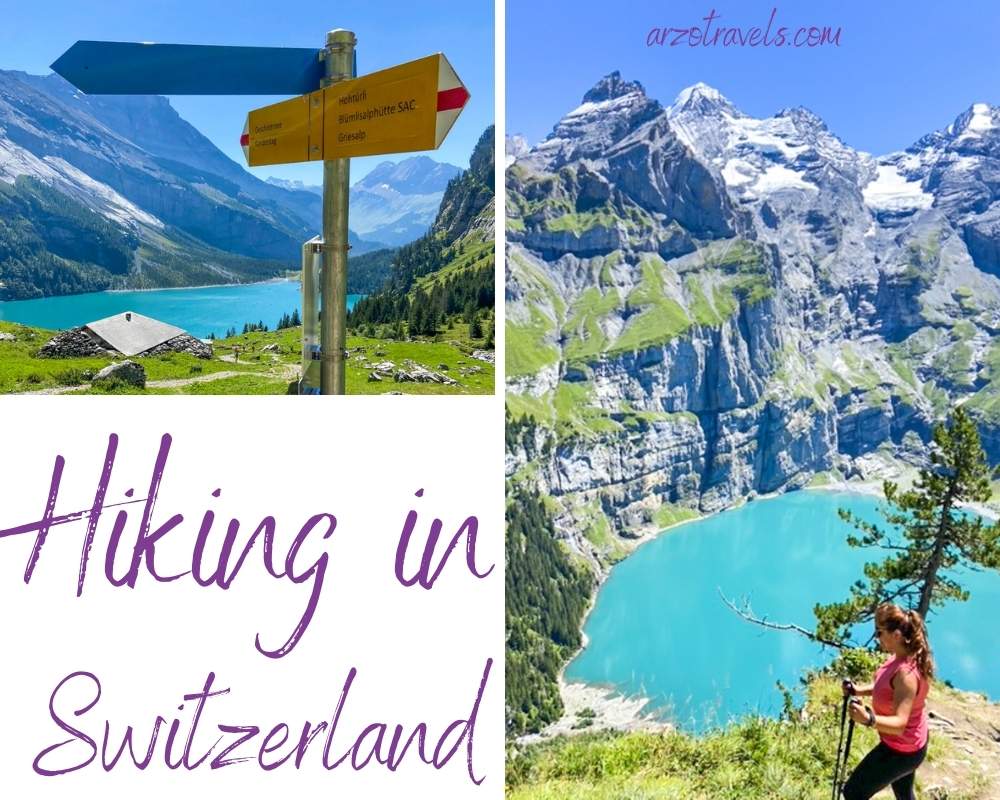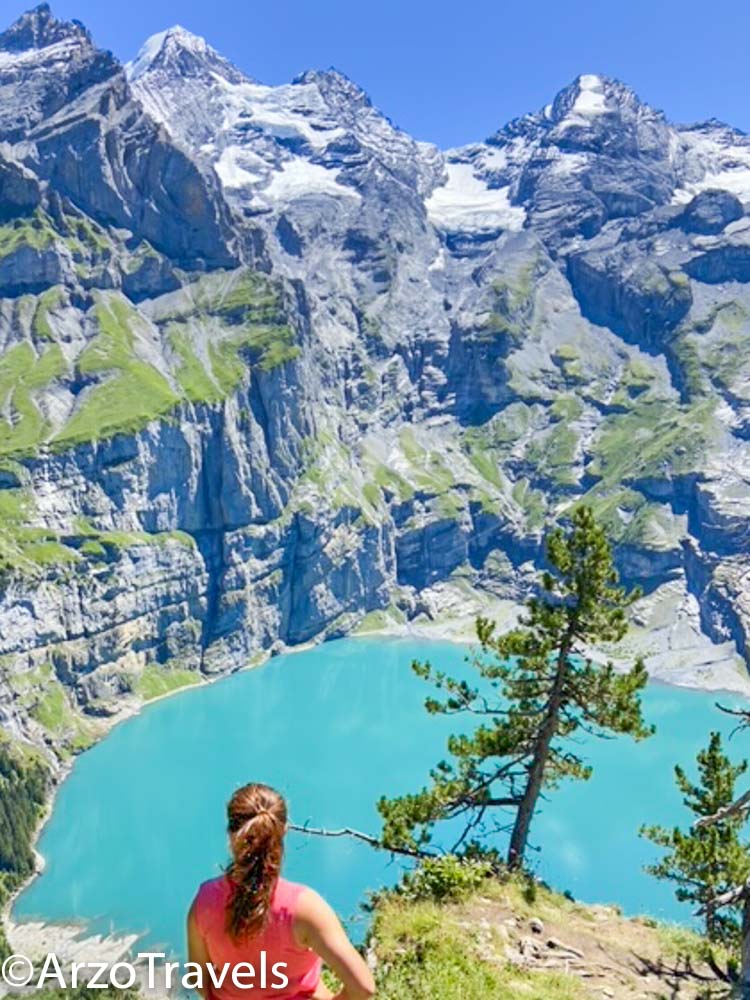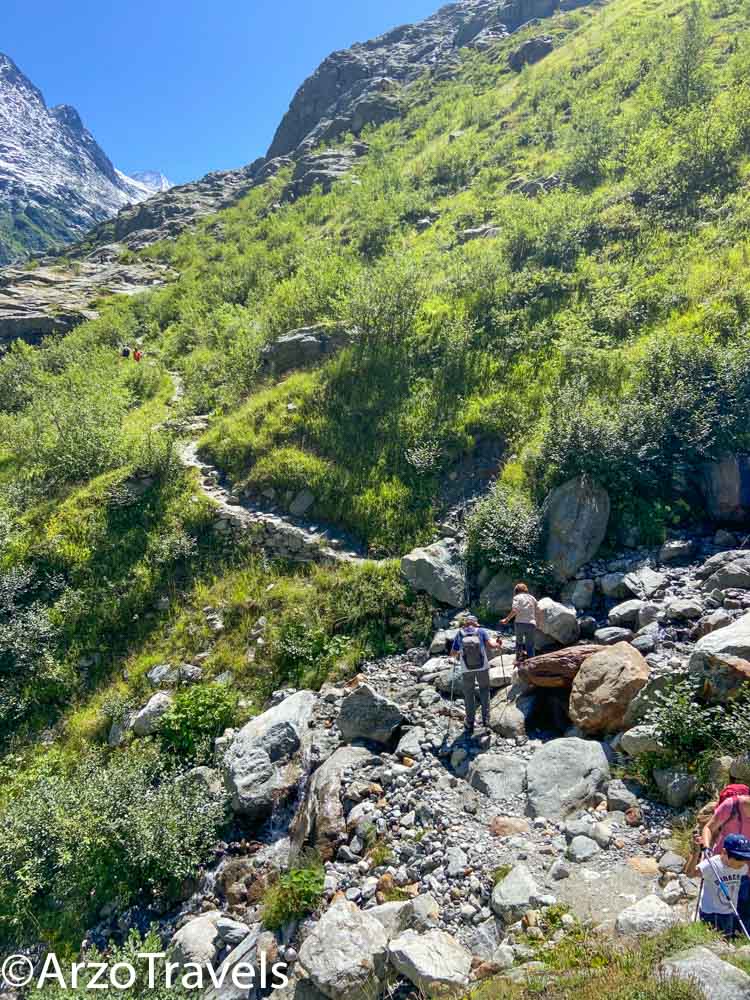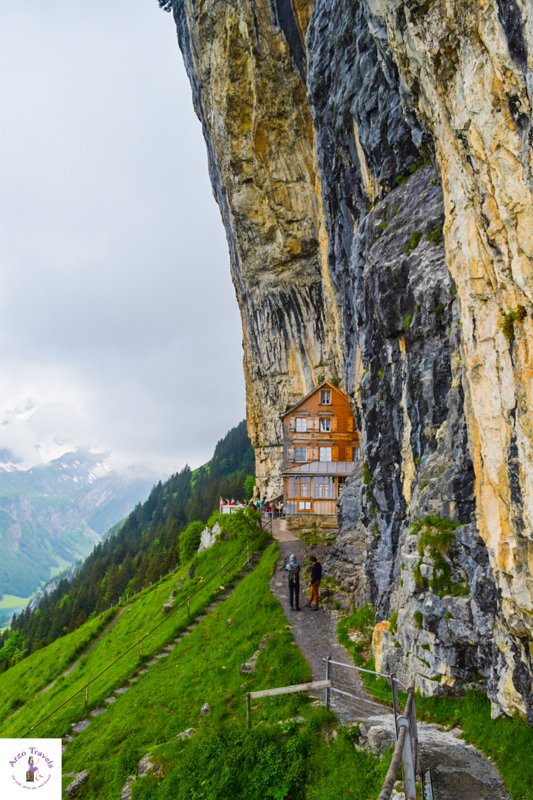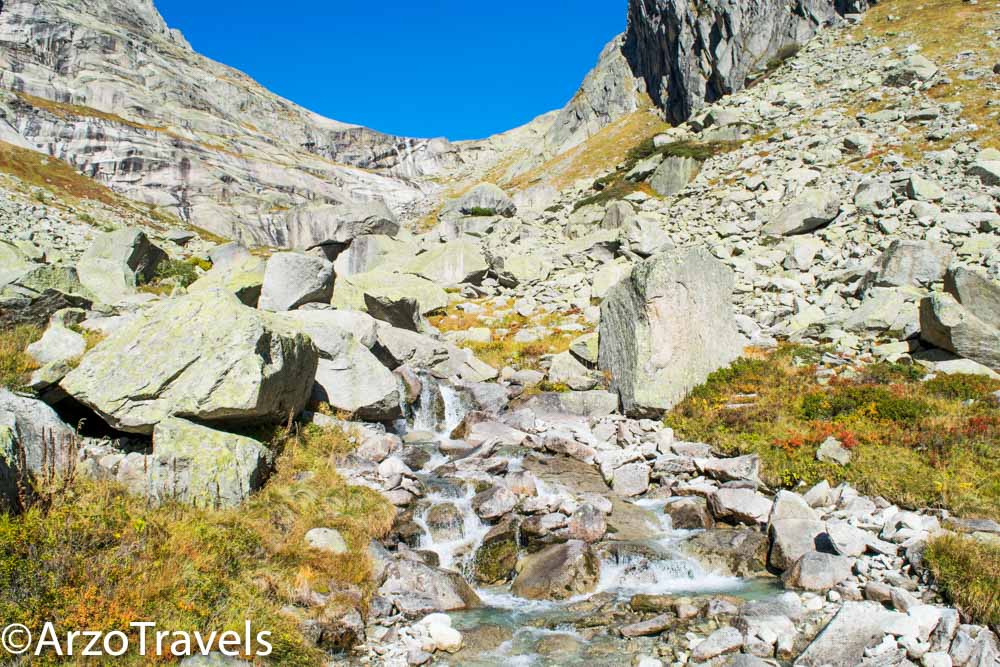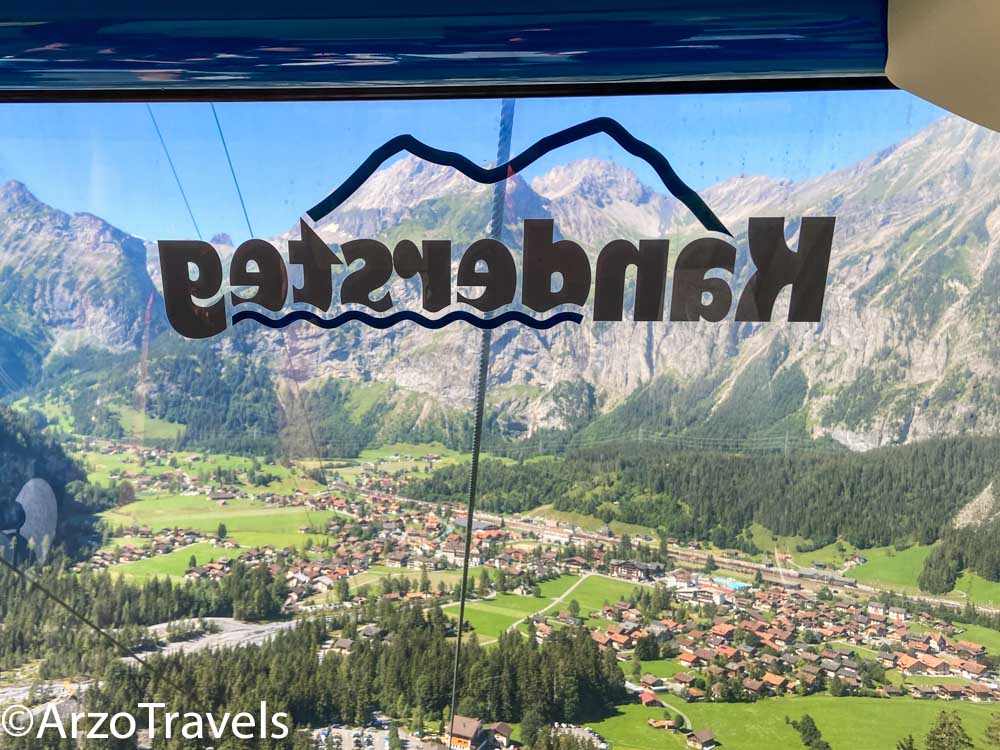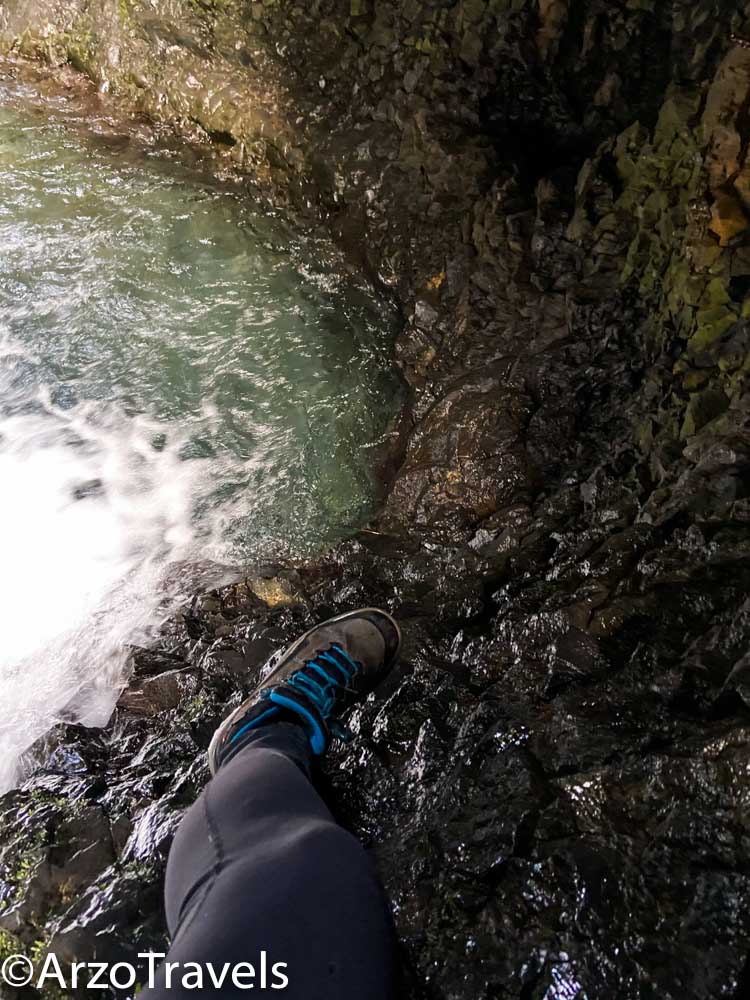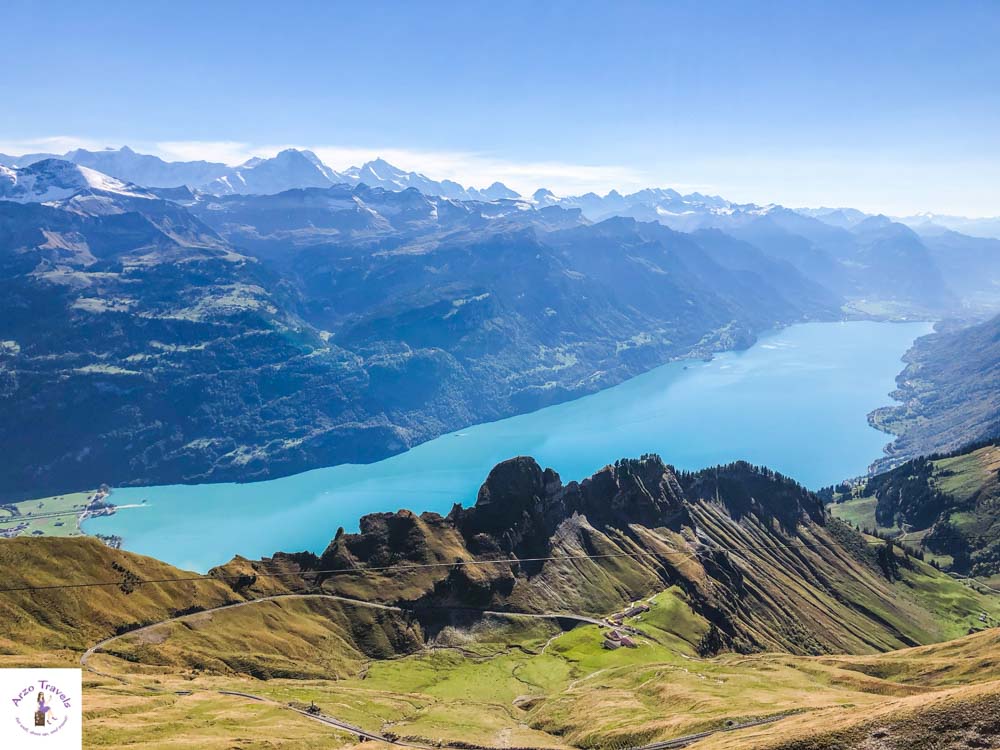HIKING MISTAKES TO AVOID IN SWITZERLAND
Switzerland is a paradise. A paradise for lake fans, Christmas Market fans, and adventure-seeking fans – Switzerland is a paradise for any outdoor fan. And hikers love Switzerland in particular. That is for many, many reasons.
Switzerland has some of the most amazing hikes for people of all ages and fitness levels.
Hiking is a national sport in Switzerland. Actually, hiking might be THE national sport (besides skiing, but let’s forget about that weirdish obsession for now). So, why do people in Switzerland love hiking? For one, because the scenery is just beyond gorgeous.
Some of the most beautiful places in Switzerland can only be seen if you hike.
In Switzerland, you can use cable cars or funiculars to get to many mountain peaks. And that is what I did for the longest time: taking advantage of the accessibility and using cable cars to enjoy breathtaking mountain views. Switzerland is very advanced with all their cable cars and so…
I mean, it makes it easy for non-Swiss. However, Switzerland was the first country that could convince me that hiking is also okay. Actually, it is more than okay. Hiking in Switzerland is excellent. And so hiking has become one of my favorite activities in Switzerland these days.
BEST TIPS FOR HIKING IN SWITZERLAND
BUT, before you pack your hiking gear and get ready for some incredible hiking tracks, here are a few things to know.
IGNORING HIKE LEVELS
So, since most of you – us – were not raised in the Swiss Alps and hiking is not in our genes, you should familiarize yourself with the levels of difficulty. Just hiking because you read from a blogger that “it was an easy hike” would be pretty risky.
I check the hike’s difficulty every time before I hike and feel comfortable doing levels T1, T2, and T3. T4 is something I would only do with an experienced guide/hiking partner.
The Swiss Alpine Club (SAC) divides hiking trails into the following categories. Before you start any hike, look into the classification system (they are marked with different colors).
T1 – HIKING
Yellow marking. The trail is well-cleared, the terrain is flat or slightly sloping, and there is no danger of falling.
No special requirements and a map is usually not necessary.
T2 – MOUNTAIN HIKING
White-red-white markings. A path with a continuous line and balanced ascent. The terrain is steep in parts, with a possible risk of falling.
You should be reasonably surefooted and have basic orientation skills.
T3 – DEMANDING MOUNTAIN HIKING
White-red-white markings. The path is not always visible. There are exposed sections that may be secured with ropes or chains and partly exposed pitches with a risk of falling, pathless jagged rocks, etc.
Good surefootedness and basic alpine experience are essential.
The above-mentioned categories can be for anyone who is reasonably fit. Now, the other hikes are for the experts.
T4 – ALPINE HIKING
White-blue-white markings. Trails do not always exist. The terrain is quite exposed, with jagged rocks and snow-free glacier sections. Be familiar with exposed terrain. Have the essential ability to assess the terrain and good orientation skills. Alpine experience.
T5 – DEMANDING ALPINE HIKING
White-blue-white markings. Often without a path. Some easy climbing sections. Exposed and demanding terrain, with steep jagged rocks, glaciers, and firn with a risk of falling. You need very good orientation skills and profound alpine experience, and elementary knowledge of handling an ice ax and rope.
T6 – DIFFICULT ALPINE HIKING
Mostly without a path. Climbing pitches up to difficulty grade II. Paths not marked. Often very exposed, precarious jagged rocks, glaciers with a high risk of slipping and falling.
You need excellent orientation skills, advanced alpine experience, and a high level of familiarity with handling technical alpine equipment.
So, these categories will help you decide whether to do a hike or not.
BELIEVING SWISS ESTIMATIONS OF HIKE DURATIONS
I can go along with the categories of hikes. As a non-expert, I think they did a great job! However, I highly disagree with the “hike duration.“ If you start your preparations, you will find information on the estimations of the hike durations.
These estimations are often on the tourism website or leaflets. If you start your hike, you will see plenty of signs that also tell you about the time estimation.
So far, so good. BUT… Please do not believe it! Add some time to it. At least 30%, I would say. Maybe more. Maybe less. Depending on how fit you are. But in general, I would plan some additional time for the hike.
Also, these estimations are pure hiking times. If you also plan to take (many) pictures and have breaks, you need to add even more time.
COMPETING WITH SWISS HIKERS
I am sure Swiss kids go to school, and do all the stuff kids should do. Though it might seem they are professional hikers.
If you hike, you will realize that everyone will overtake you. Kids, older people, animals (OK, I have yet to be overtaken by a Swiss cow)… everyone overtakes you. It seems they are born with some genes that non-Swiss people are missing. So, my tip is: Do not compete with Swiss locals. It is not our fault. Our genetics are just not the same.
Unless you have acquired hiking skills because of numerous hikes or are a professional athlete, ignore all the people passing you.
NOT USING TREKKING / HIKING POLES
I always thought hiking poles were an accessory for older people or people who wanted to look like professional hikers. It looks kind of fancy, hiking with poles.
However, it seems I was wrong. Hiking poles can be highly beneficial. Beneficial in many ways (for your health and your condition). They take shock off your knees on downhills while they can give you a boost on uphill hikes. They help you with keeping balance on slippery rocks or uneven terrain. These are just a few of the reasons to use trekking poles.
So, what brought me to this realization? Well, I got to try them out on my Lake Oeschinen hike. I met a girl in my hostel and we did the hike together. She lent me her poles for the first part of the hike.
As a Swiss, she did not struggle as much with the hike as I did. She quickly realized I needed them more, so she lent them to me for the duration of the track.
Guess what? I just bought some myself, and I am ready to do all the hikes that Swiss people do, too. OK, we‘ll see about that, but I am well prepared.
NOT CHECKING THE WEATHER FORECAST
I am a weather snob. So, I only hike if the weather is good or at least decent (except for the day I hiked to the Aescher… do not ask). Even Swiss people hike less on rainy days (and that means something).
And honestly, hiking in the rain is no fun, and it can be dangerous. And it is even more tedious. And it is just no fun. So, what is the point of hiking if it is no fun? There are not many reasons left.
Some people might say it is mythical when everything is covered in fog, but do you think the Aescher would have become so popular if you could not see it?
So, the main reason I travel is for the views. And lousy weather makes for terrible views. Check the weather and avoid – if time allows – rainy and foggy days for your hike.
NOT BRINGING A REFILLABLE WATER BOTTLE
Hiking is one of the best options to save money in costly Switzerland. Everything is expensive, except hiking… and water. So, if you want a very cheap day, spend the day hiking and bring your water bottle to refill.
Usually, there are many water fountains/waterfalls along the hike providing fresh water. Double-check if there are waterfalls along the way; I have been on some hikes and did not find any. That was kind of tough.
SKIPPING CABLE CARS ALTOGETHER
Yes, we know that hiking in Switzerland is amazing and it can save us tons of money. Cable cars can be really expensive, so many people skip cable cars for this reason alone and hike.
However, sometimes using cable cars makes sense. Do not worry. You still get to do some serious hiking. For instance, if you want to see Trift Bridge, it might be smart to use the cable car to get up.
From there, you have to get to the bridge, and that will take several hours. So, cable cars can ease your hike, but some hikes are pretty challenging, so then cable cars are sometimes an intelligent addition to your hiking day.
WEARING REGULAR SHOES / SNEAKERS
Recently, I lost one of my hiking boots in Iceland. Please do not ask me (I really do not know for sure what happened, but I have some ideas).
Anyway, I was such a tightwad that I did not buy new hiking boots straight away. So, I did the hikes in sneakers because wearing one hiking boot did not seem like a fantastic idea.
Then, my sneakers got ruined, and I was devastated (kind of). Sneakers are not made for hiking (who knew??). So, I had to buy new sneakers and new hiking boots.
So, my lesson: hike in proper hiking boots. Especially in Switzerland, where hikes can be challenging, to avoid ruined sneakers and ruined body parts (like ankles or feet). Only for hikes categorized T1 are sneakers fine.
NOT WEARING LAYERS
This applies to hiking in all parts of the world: I highly recommend dressing in layers. Weather in the Swiss Alps can quickly change, and being too warm or too cold will make hiking less fun. It might be extra stuff to carry around, but I guess it is better to carry a pullover in your backpack than freezing and not enjoying the views at the top.
STARTING LATE
Vacations mean sleeping in for many. I get it. But if you plan a hike, then you should start early. Switzerland is not located near the Arctic Circle, so it does get dark quite “early” in summer. If you plan a hike that takes 6-8 hours, you should start your hike at 9 am, or 10 am, ideally.
This will guarantee a parking spot, smaller crowds (and fewer people overtaking you), and less hassle.
Also, you want to avoid hiking back in the dark.
NOT TELLING PEOPLE WHERE YOU ARE
As a solo female traveler (sometimes hiking with my dog), security is fundamental to me and should be important to you, too. We do not want to lose anyone in the Swiss Alps. We want you to get back safe and sound.
So, make sure you tell people where you are.
LEAVING TRACES
Yes, we want to be remembered once we are not there anymore. But no one wants to remember our tissues with mucus. Or even worse, our plastic food packaging, which might stay for many, many decades somewhere in the Swiss Alps. So, keep your trash (except organic waste) and bring it back with you.
Yes, sometimes there are no toilets, and you need to let it “happen.” But go to a remote place and dig a hole if necessary.
So, when you hike, do not leave any traces except for shoe prints.
NOT CLIPPING YOUR TOENAILS
This is the most important tip I can ever, ever give you. If you go on a hike that includes some steep downhill hikes, shorten your toenails.
Yes, even if you think they are shortish, they might still be too long. And long toenails can be a nightmare when hiking. Really, just take it from me. Hiking in the cold – is somehow manageable. Hiking in the rain – is somehow manageable. Hiking with longish toenails – is not manageable.
BEING SURPRISED ABOUT SWISS FLAGS
Wherever you go, you can be certain, there are Swiss flags around. No place in the Swiss Alps is free of the Swiss flag. As someone who is not really into nationalism (and yes, the Swiss are kind of nationalists) I am always wondering “why”? but I know, I should not be putting too much thought into it.
So, if you can hike to a place, a Swiss flag might be there to welcome you.
NOT GREETING SWISS HIKERS
Swiss people are not known for being overly chatty. If you hike, then Swiss people, however, will always greet you. Especially in the German-speaking part, locals are friendly. “Gruezi” should be part of your hiking vocabulary.
READY FOR SOME HIKING IN SWITZERLAND?
If you are ready to go on a few hikes in the Swiss Alps (or anywhere in Switzerland), I envy you! This country is so rich in hiking trails that everyone will find a perfect hike. Just keep a few things in mind and avoid these hiking mistakes in Switzerland.
FAVORITE HIKES IN SWITZERLAND
Here are some of my favorite hikes in Switzerland:
Stay safe and enjoy!
